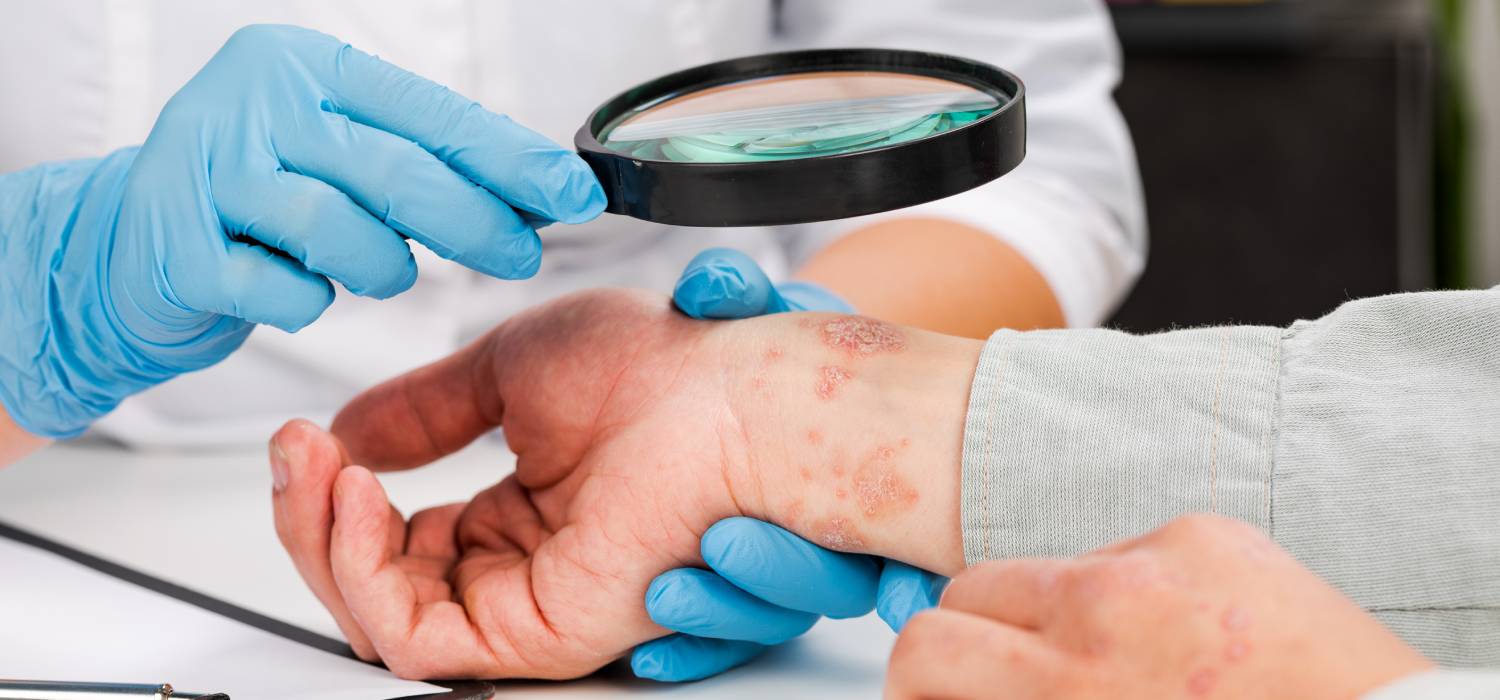Learn More About Psoriasis
Psoriasis is a condition that affects more than 8 million people in the United States alone. This chronic autoimmune condition causes skin cells to accumulate rapidly, resulting in scales appearing on the surface of the skin. These scales are generally whitish-silver in color and appear in thick, red patches. They can also appear as a dark brown or purplish color with gray scales on those with darker skin tones. This condition can be more than an unsightly blemish. The scales can crack, causing them to bleed. If you’re one of the 8 million Americans living with psoriasis, Parasol Dermatology can help!
Psoriasis and How Parasol Dermatology Can Help
In healthy skin, we regularly lose dead cells off the surface of our skin. The period of time from a new skin cell being formed to our losing it is generally about one month. For those suffering from psoriasis, the growth of skin cells is rapidly increased. The growth of new skin cells can happen over just a few days, leaving insufficient time for the old skin cells to die and fall off. This overproduction of skin cells leads to the scaly build-up experienced by psoriasis sufferers.
The most common areas for scales to develop are on the knees, elbows and other joints. However, this scaling may appear anywhere, including the ears, lips, hands, nails, feet and eyelids. It sometimes will appear in small patches, or it can be widespread. It’s also possible for psoriasis to appear in multiple areas at the same time. Anyone, no matter their age, can develop psoriasis. The most frequent times for it to appear are between the ages of 20 to 30, or 50 to 60.
Psoriasis is also associated with a few other medical conditions. More than 30 percent of all patients with psoriasis may develop psoriatic arthritis, which can limit movement as it advances. Psoriasis patients are also more likely to develop diabetes, obesity, depression and high blood pressure. They’re also more prone to strokes and heart attacks as a result.
There are multiple forms of psoriasis, the most common being plaque psoriasis. Other forms include:
- Guttate psoriasis
- Erythrodermic psoriasis
- Pustular psoriasis
When you come to see Dr. Bolante about suspected psoriasis, she’ll require information about the medication you’re on, recent infections, family history and environmental exposures. She’ll also perform an examination of your skin, and ask about your joint and skin symptoms. She may also need to do a skin biopsy to narrow down details about your psoriasis. This information will help Dr. Bolante assess which kind of psoriasis you’re suffering from, and what she can do to treat it.
Visit Parasol Dermatology For Psoriasis Treatment
There are numerous treatment options available for psoriasis. The specific treatment you choose depends on the severity of your psoriasis, and any related conditions such as psoriatic arthritis. Mild cases can be treated with topical corticosteroids and vitamin D. Psoriasis that is moderate or severe in nature is treated with a variety of more advanced options. These include phototherapy, a treatment involving ultraviolet light waves. Biologic medications aim to reduce the molecules that cause inflammation and are typically administered by injection. Call us in Monterey, CA to schedule a consultation to learn more.


